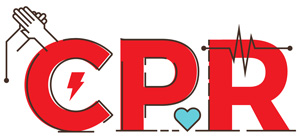
What would you do if someone collapsed in front of you and appeared to stop breathing?
It's an uncomfortable situation to consider. But thinking ahead and learning cardiopulmonary resuscitation (CPR) might help you save a person's life.
You can learn hands-only CPR (also known as compression-only CPR) quickly. You don't need formal training or certification to do it correctly.
Here are the American Red Cross guidelines for administering hands-only CPR to a teen or adult:
- Tell someone to call 911 and to get an automated external defibrillator (AED) while you stay with the person.
- Make sure the person is lying on their back on a flat, hard surface.
- Kneel next to the person with your knees shoulder-width apart.
- Put the heel of one hand in the center of the person's chest. Place your other hand on top. Then interlace your fingers and lift them off the chest.
- Position your body so that your shoulders are directly over your hands. Straighten your arms and lock your elbows.
- Begin compressions. Push hard—your hands should go down at least two inches—and quickly, at a rate of 100 to 120 compressions per minute.
- After each compression, let the chest return to its normal position.
- As soon as an AED becomes available, use it.
Being prepared for a medical emergency can help you save a life.
Sources: American Heart Association; American Red Cross